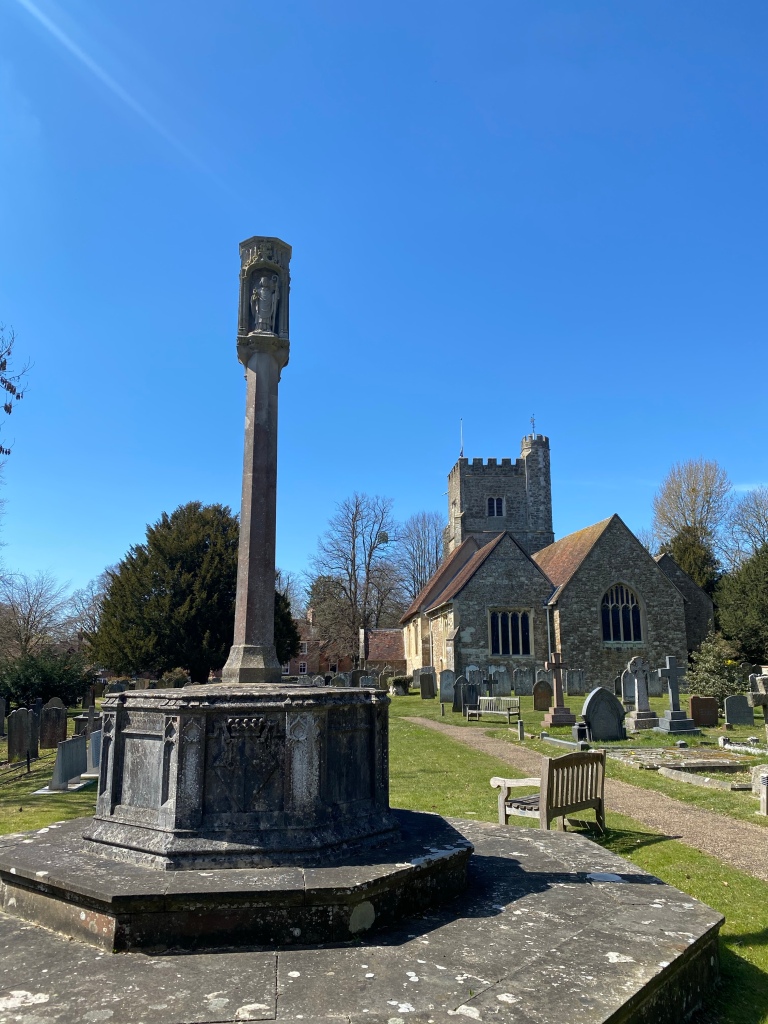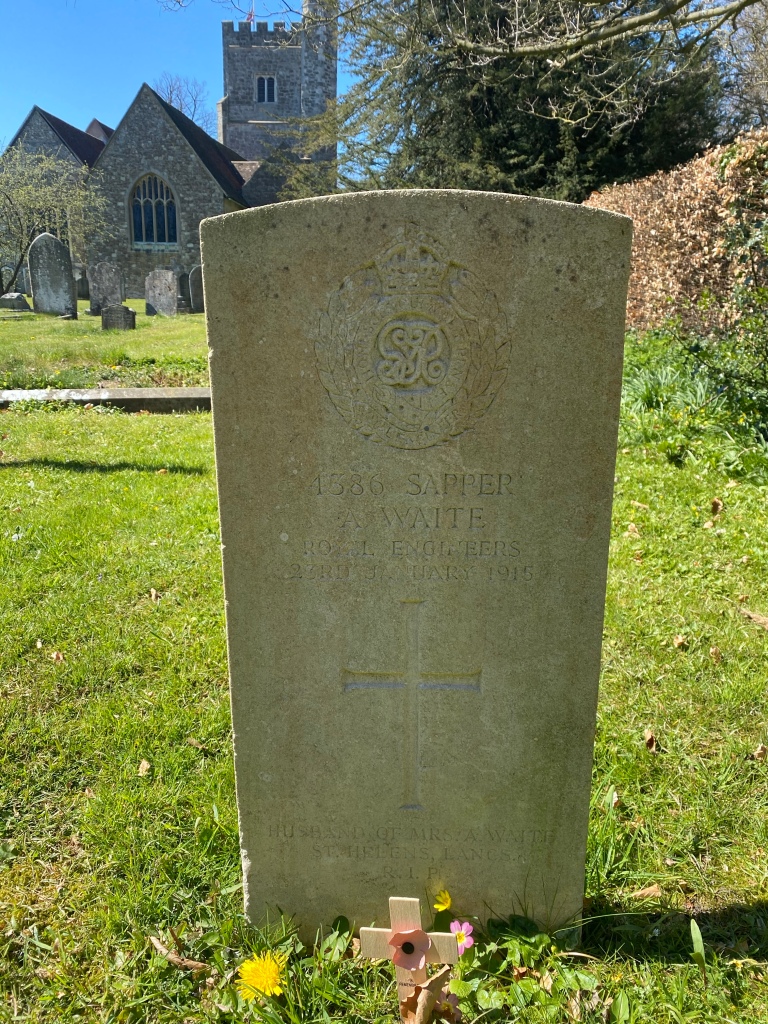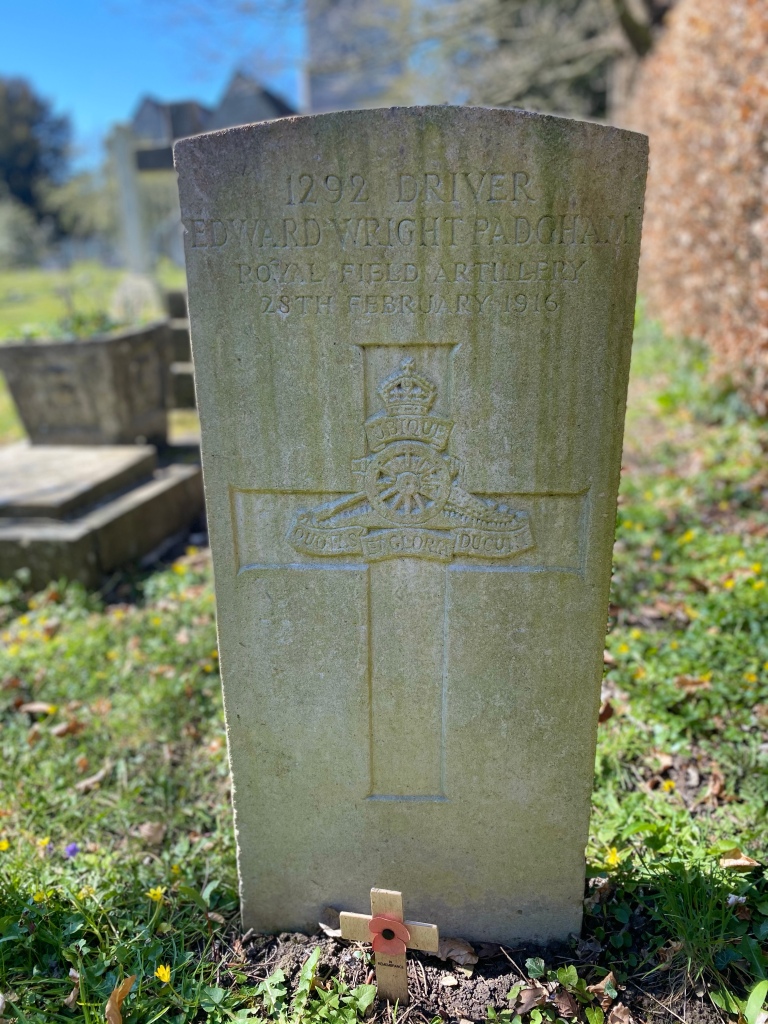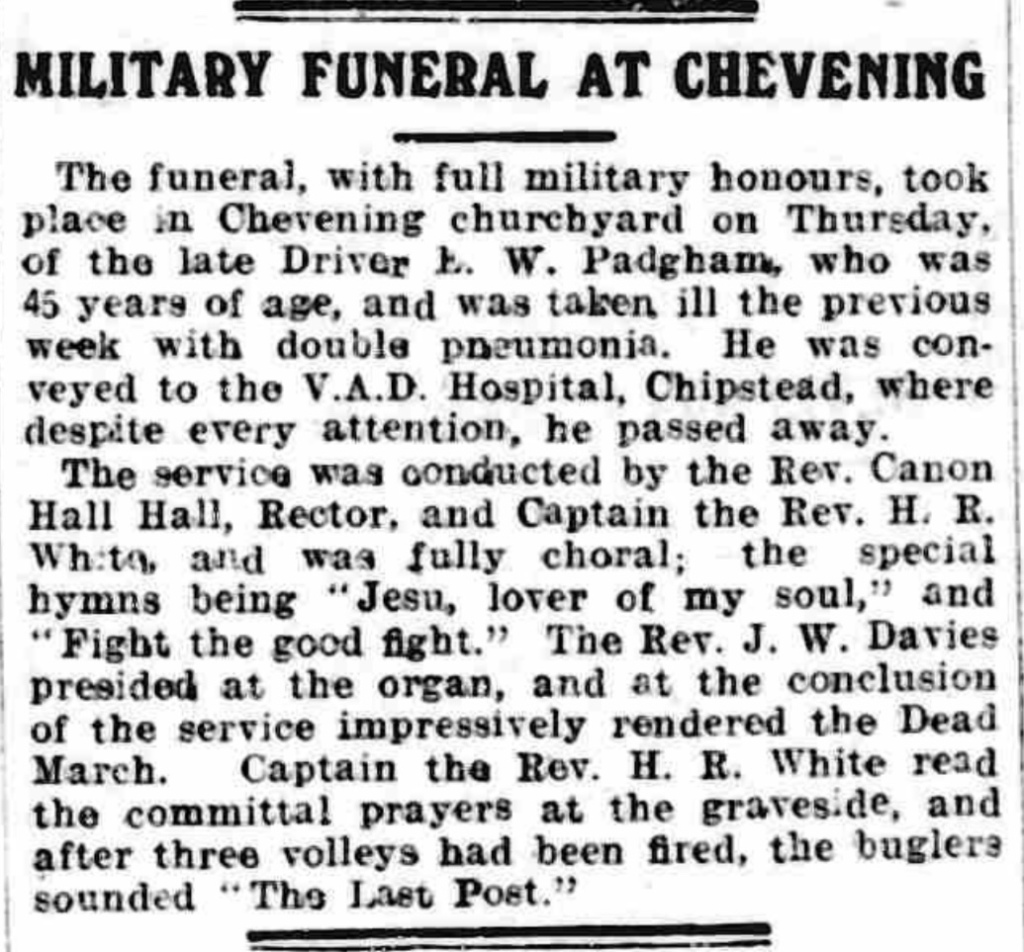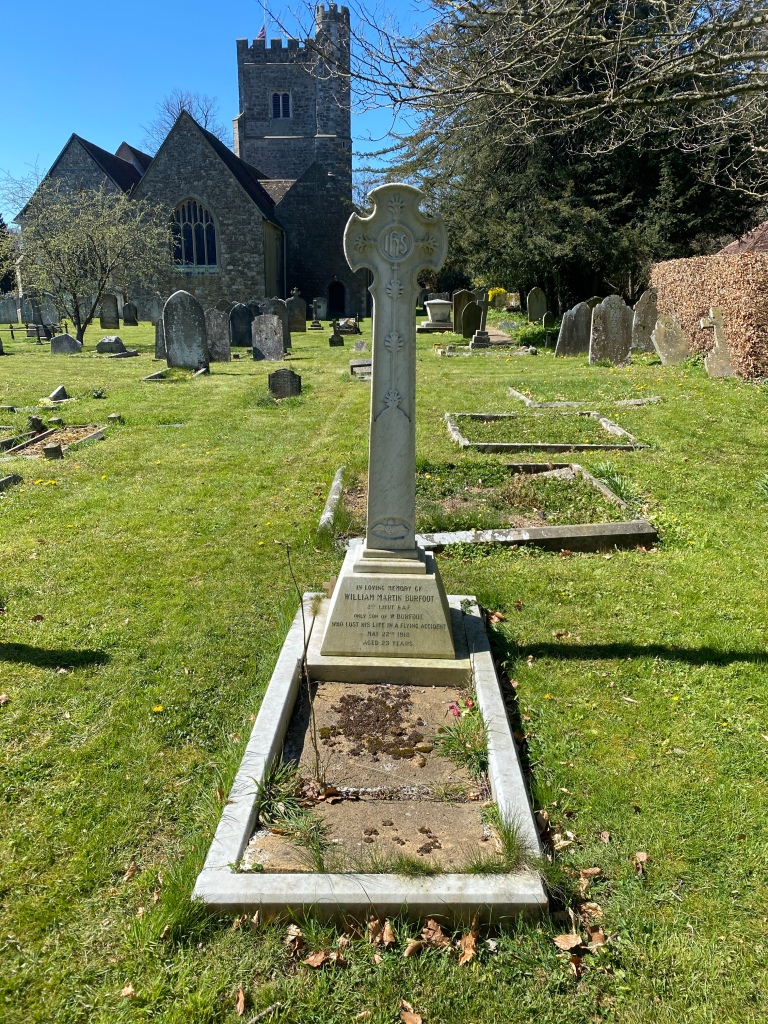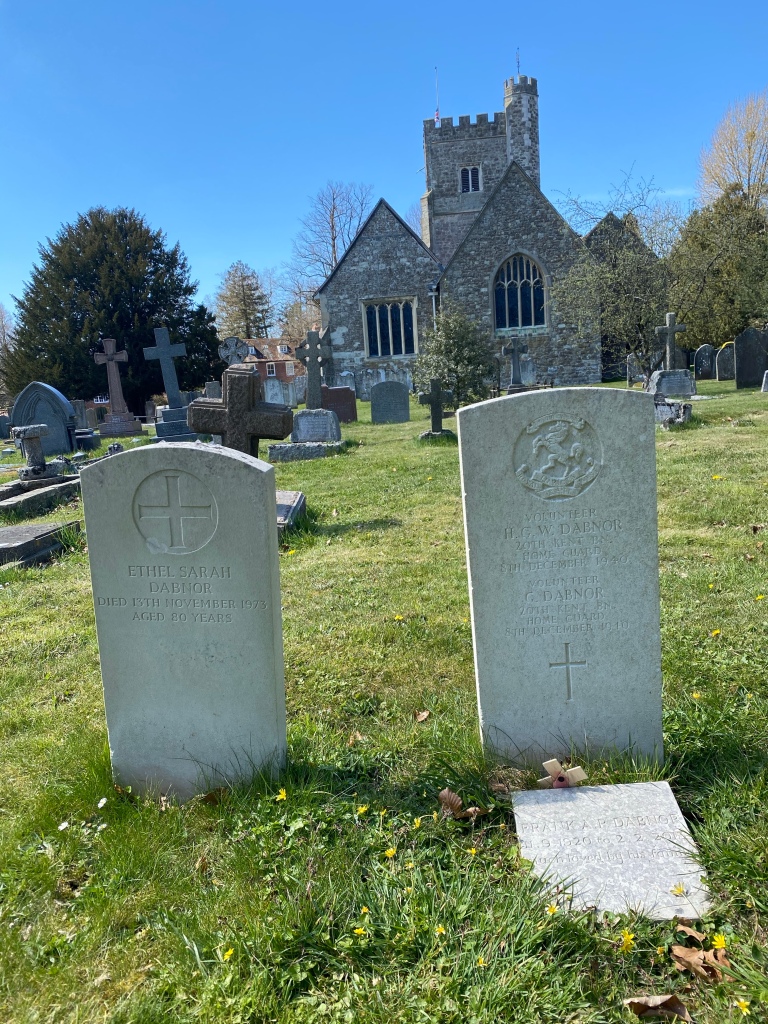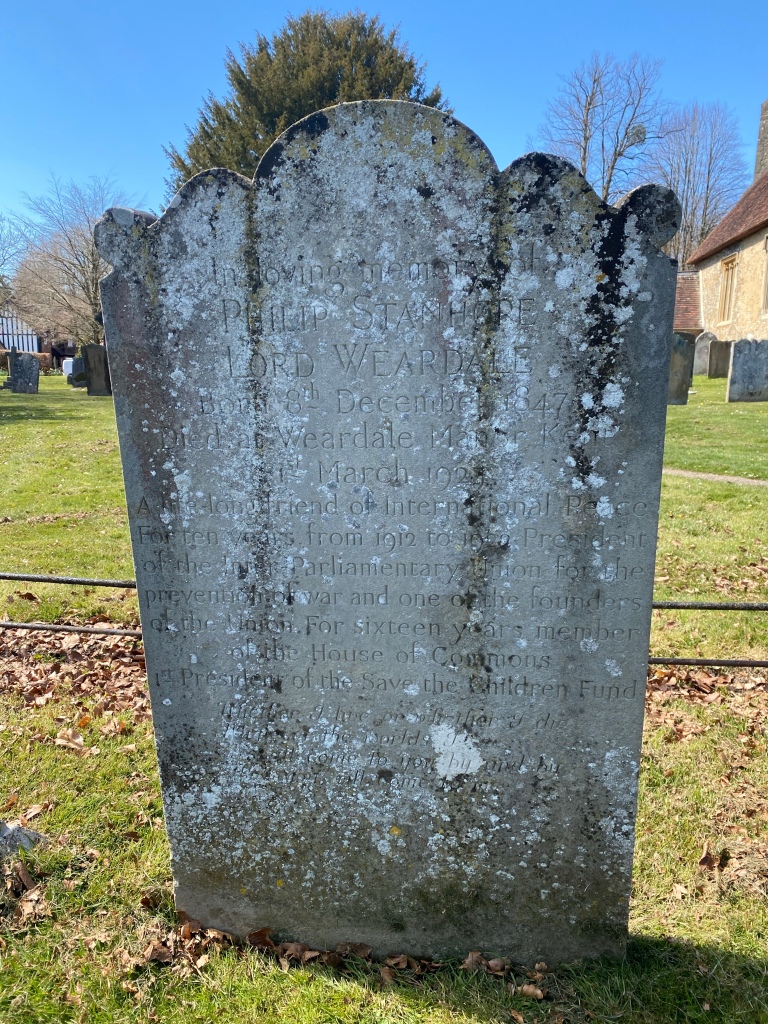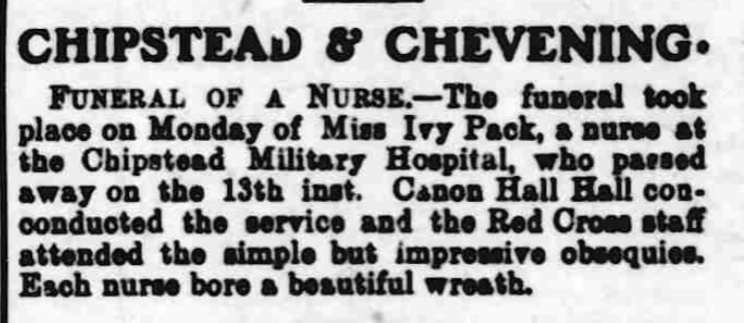I’ve been meaning to visit nearby Chevening for a while. The village is perhaps best known for Chevening House, once home to the Earls Stanhope, now a grace and favour residence for the Foreign Secretary, although it was considered as a country residence for Prince Charles, when originally bequeathed to the nation. I was aware of at least one Great War burial there, that of William Burfoot, who I knew was an Old Boy of Sevenoaks School but there are several of interest.
There are six Commonwealth War Graves in the churchyard, four from the Great War and two from the Second. Some of these are the last resting place of local men but, as Chevening was close to the Chipstead Military Hospital, two of the men were from the north west of England.
Sapper Arthur Waite of St Helen’s, Lancs, was buried here in January 1915. Aged 49, two of Waite’s sons were killed after his death. Corporal Richard Waite in 1915 and John Waite in October 1917.
Edward Wright Padgham of the Royal Field Artillery died at Chipstead VAD Hospital in 1916 aged 45. The local paper reported his death and funeral service.
Both Waite and Padgham’s graves are marked by the familiar headstone of the War Graves Commission. William Martin Burfoot was a local man and lies nearby with a more traditional headstone. An Old Boy of Sevenoaks School who first served with The Dorset’s, he was killed in a flying accident in 1918 aged 23 and was the subject of an obituary in the Sevenoaks Chronicle.

Harry Smith of Royal Defence Corps 121st Protection Company was sixty, when he died in 1916. Harry’s funeral wasn’t reported and his story requires more research
Also buried here are father and son Herbert and Gordon Dabnor, of 20th Kent Battalion, Home Guard, killed in December 1940. Gordon Dabnor was just 16.
The Kent and Sussex Courier of Friday, 13 December reported the circumstances of their deaths:
A village which has already experienced the effects of bombing, fortunately on past occasions without casualties, again suffered on Sunday night, when a father and son lost their lives. The father was killed instantly, the son dying some hours later in hospital. Other members of the family were injured.
The deceased man, Mr. Dabnor, with his wife and 16-year-old son, resided in a cottage on a farm, together with a cousin of Mrs. Dabnor’s and her husband. In the evening the little family party were about to leave the farm when a stick of high explosives came crashing down across the fields. One landed near the farm buildings, which were destroyed, and the male members of the party, who were in front of the women, sustained the full force of the blast. The two ladies escaped with shock and, in the case of Mrs. Dabnor, a slight cut on one arm. Mrs. Dabnor attributed their escape to the fact that they were able to throw themselves to the ground just in time for the flying fragments of the bomb to miss them. They called to the others, she said, but got no reply, and then they found them lying on the ground. She tried the telephone to seek help, but the wires had been severed, so she ran down to the farmhouse, from which help was summoned.
The churchyard also includes many graves of the Stanhope family. Pictured is that of Hon Philip Stanhope, Lord Weardale. The inscription describes him as ‘a lifelong friend of peace’. He was a President of the Inter Parliamentary Union and of Save the Children.
The Sevenoaks Chronicle of September 17 1915 briefly reported the death of nurse Ivy Maud Pack, who was just eighteen. Ivy was described as a nurse at the nearby VAD Hospital but does not appear in the database of the Red Cross. Possibly she had a more junior role or will appear in other records. We’ll be back to visit this quintessentially English village to find Ivy’s grave, where she lies with a younger cousin who died later in 1915 aged ten.

